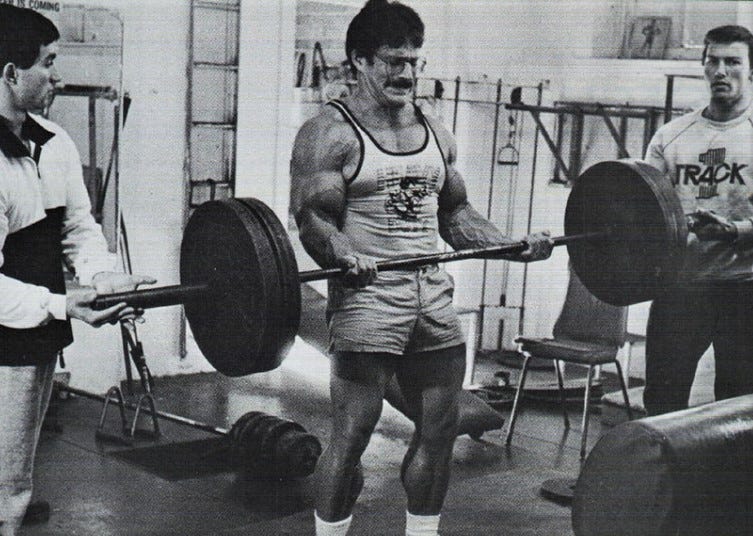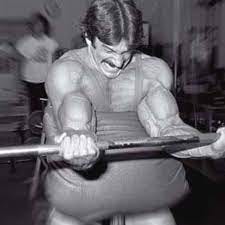“What weight should I use?”
Weight selection is an art and science. You want to push yourself, but also leave room for progression. It really isn’t complicated, you’re probably just over thinking it. Below are some loading strategies I use for myself and my clients, if you’re stuck benching the same weight every time you’re in the gym then it’s probably time to change your loading strategy.
Straight Sets
This is also known as standard sets or constant loading. Straight sets require using the same weight for all 4 sets. This method is better for beginners or those returning to training after time off. You may also use straight sets with percentage based training.
Example:
100 x 12, 100 x 12, 100 x 12, 100 x12
Straight sets are used most often in my experience. However, straight sets are probably not the best method for most trainees.
Step Loading
Increase weight incrementally each set working up to a rep max or near rep max by the end. Aim for a 2-3% increase each set. At most, step load 10-12% across a set. You shouldn’t start a set with 50 lbs and end with 200 lbs, the first couple of sets were likely ineffective in that case.
Example
90 x12, 95 x 12, 100 x 12, 105 x 12
Progress weight after hitting the end of the rep range. Week 2 try to start with 95 lb x 12, then go to 100 x 12, 105 x12, 110 x 12. Week 3 start with 100 lbs. You’re slowly stepping up the weight over the course of the progression.
Pyramids
There are ascending and descending pyramid sets. These were common when i was lifting at the local Bally Fitness. You start light for high reps and work your way up to heavy for low reps (ascending). You could also start heavy and work your way down in weight and increase reps (descending).
Ascending
90 x 12, 100 x 10, 110 x 8, 120 x 6
Descending
125 x 6, 115 x 8, 105 x 10, 100 x 12
Use a similar progression to the step loading progression for pyramids, or simply just try to add reps each week to some or all of your sets. Descending pyramids are more effective since they stimulate the nervous system and allow you to lift heavier for more reps. However, if you’re short on time and just want to build volume while getting some strength benefit, then doing an ascending pyramid is also an option.
Cluster Sets / Rest Pause Sets
Cluster sets and rest pause sets are similar methods so I clumped them together. You essentially do reps, then rest 15 to 30 seconds and finish out the remaining reps. Cluster sets can be broken into 2, 3, or sometimes 4 and 5 segments. The advantage of this training method is you can go heavier since the rest period allows the ATP-PC energy system to partially replenish.
Example:
Hypertrophy Cluster
4 x 8-8
90 x 8-8, 90 x 8-8, 90 x 8-8, 90 x 8-8
Strength Cluster
5 x 1-1-1-1
Rest pause sets involve hitting a weight for as many reps as possible then resting, and hitting it for as many reps as possible again until you’re done with your prescribed sets or total rep count.
Total rep count is also a great method. Set a goal like 50 pull-ups and use rest pause to breakup the 50 reps until you hit 50 total pull-ups. You can add volume each week (50 to 60 next week for example). This is also a great method for improving bodyweight movements like pushups, chin/pull-ups, and dips but it can be used for accessory work as well.
Total time is another rest pause method. Start a timer for 5:00 and hit as many reps as possible. This would also technically fall under the category of escalating density training if you’re aiming on keeping the time domain the same but icnreasing reps each week. It’s great if you’re pressed for time or want to challenge yourself with a different training style.
Rep Range Loading
I still get questions weekly from clients about weight selection and loading. Everything I program is typicall going to be a 3 week training block. Week 1 should be an RPE 7 (3 reps left in the tank roughly), Week 2 should be RPe 8 (2 reps left in the tank roughly) and week 3 should be an RPE 9-10 (0-1 reps left in the tank). However, I still recommend pushing the last set harder if possible.
The above is for your primary, A series movements. For B and C series accessory accessories, just send it. Typically B and C series exercises I will program rep ranges like 10 to 12 reps. Find a weight you can hit for at least 10 reps but not 13 in this case. If you miss by a rep and can hit 13 or hit 9 reps, that’s fine as long as it isn’t happening every set and every session. Sometiems you just have to push.
Another option is wider rep ranges like 6 to 10 reps. This is a program style I ran for a while when i stopped making progress doing sets of 8 to 12 as a novice. Pick a weight you can do for 6 to 10 reps, build reps each week with that weight. When you can do 9 or 10 reps each set then add weight.
Don’t use rep ranges as an excuse to not traing hard. Find somewhere to build from and progress it each week until the next training block.
Stay strong,





